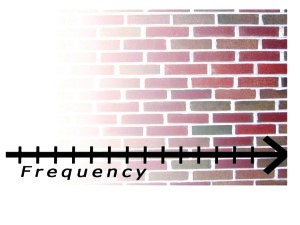A Primer on Equivalent Volume, Impedance, and Couplers for Hearing Aids
Back to Basics
Back to Basics is a monthly column written by Marshall Chasin for the Hearing Review. Permission has been granted to reprint some of these columns in Canadian Audiologist.
Published on November 21, 2015
Back to Basics | December 2015 Hearing Review. Reprinted with permission.
Despite having an undergraduate in mathematics, I and most of my audiology colleagues tend to sweat when we hear the word impedance. “Admittance” is a much less nuanced word, but nevertheless can be just as scary. Most audiologists and hearing care professionals would rather hear about the phrase “equivalent volume.”
We have all learned about impedance in our first few months of school—it is dominated by stiffness for the lower frequencies and mass for the higher frequencies. This is why pure-tone audiometry yields a low frequency (conductive) hearing loss if there is a higher-than-normal stiffness component, such as found with otosclerosis, and a rarer high frequency conductive hearing loss if there is greater-than-normal mass on the ossicular chain. Additional mass that is greater than 50 mg on the ossicular chain will generate a high frequency conductive component, and this is sometimes seen with middle-ear implants that have a magnet placed on the ossicles.

Figure 1. For higher frequency sounds, the eardrum and middle ear structures act as a brick wall relative to aiding in the transmission of these sounds.
I attended an engineering seminar recently and the engineers were talking about impedance, modeling of the ear, and how sound is transmitted (or not) effectively through the middle ear to the cochlea. After the dust had settled, it became apparent that what these engineers were talking about is “What does the hearing aid ‘see’ when it is placed in the ear?” It turns out that, for low frequency sounds, the hearing aid “sees” the outer ear canal volume and the eardrum and the middle ear structures, as well. In contrast, for higher frequency sounds, the hearing aid “sees” only the outer ear volume. For high frequency sounds, the eardrum and middle ear structures are a “brick wall,” as nothing further in contributes to the transmission of sound.
Higher and lower frequencies render different equivalent volumes. Audiologists generally talk and think in terms of equivalent volume rather than impedance. If higher frequencies “see” only the outer ear canal volume, the generated sound is only related to that occluded volume—the smaller it is (eg, long bore canal of the hearing aid), the higher the generated sound pressure level; the larger it is, the lower the sound pressure level.
For lower frequency sounds, the hearing aid “sees” the outer ear volume + compliance of the eardrum + equivalent volume of the middle ear system. In short, this is a much larger equivalent volume than for higher frequency sounds. According to Boyle’s Law, the larger the (equivalent) volume, the lower the sound pressure generated.
The 2cc coupler and equivalent volume. The 2cc coupler, like all couplers, is terminated with a microphone rather than an eardrum and middle ear system. What the hearing aid “sees” is a rather uniform equivalent volume (governed by the volume of air in the 2cc coupler and the compliance characteristics of the test microphone). It is not a flat response (it has a dip or anti-resonance in the 13,000 Hz region), but it also is not something that varies, as the human ear does, with frequency.
This has been somewhat of a nuisance for manufacturers marketing hearing aids with bandwidths extending up to 16,000 Hz. Because of this 13,000 Hz anti-resonance in a 2cc coupler, the frequency response appears to be quite poor in this extended high frequency region. Subsequently, there are differences between what is measured in the 2cc coupler and what is measured in the real ear (real ear to coupler difference or RECD). This difference is the greatest for the higher frequency region, and the least for the lower frequencies. It is as if, for the lower frequencies, sound moves forward with the hand break on—there is a larger equivalent volume.
Another issue is that the precise characteristics of the microphone that is used may affect the RECD and this is an inherent problem which currently has no real solution.
In an attempt to bring the 2cc coupler results more in line with those of the real ear, some engineers and audiologists working in the standards branch of our field have even proposed two different sized couplers (with different volumes) for the low frequency and for the high frequency sounds.
Other non-2cc couplers. Smaller volume couplers, such as one with a 0.4cc volume, appear to have a flatter frequency response as compared with the 2cc coupler, but still suffer from a high frequency anti-resonance (this time at 14,000 Hz which is related to the one-half wavelength resonance of the ear canal). This dip or anti-resonance however is much smaller than that of the 2cc coupler.
However, if our goal in a hearing aid test box is to verify the reported characteristics of a hearing aid to see if it meets the specification standard (such as the one according to ANSI S3.22 or the equivalent IEC 60118-7 European standard), it doesn’t really matter what volume of coupler is used, as long as it is consistent. To date, there is no “performance standard”; that is, there is no standard that says that a hearing aid should function to a certain performance. So trying to create a simulation of the real ear for this purpose may be not appropriate.
Don’t panic! So next time you hear the word impedance, and your eyes start to glaze over, substitute “equivalent volume” and note that it is larger for lower frequencies and smaller for higher frequencies.

